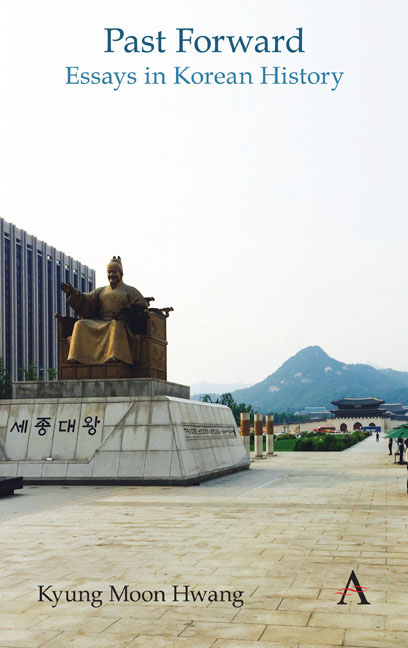Book contents
- Frontmatter
- Contents
- List of Figures
- Foreword
- Chronologies of Korean History
- Themes
- Acknowledgments
- Note on Romanization and Spelling
- Part I Circulating History
- Part II Durable Traditions
- 8 Marking the New Year
- 9 Slavery, Bondage, and Social Hierarchy
- 10 Marriage, Adultery, and Concubinage
- 11 Buddhism and Korean Identity
- 12 Christianity's Rapid Rise
- 13 Civil–Military Balance in Politics
- 14 Regionalism in Elections
- 15 Yeongnam's Strong Presidential Politics
- Part III Ancient Remains
- Part IV Dynastic Depths
- Part V Modern Origins
- Part VI Challenges of Nationhood
- Part VII History Makers
- Part VIII External Presences
- Part IX Trials of Modernization
- Part X Gripped by the Past
- Index
15 - Yeongnam's Strong Presidential Politics
from Part II - Durable Traditions
- Frontmatter
- Contents
- List of Figures
- Foreword
- Chronologies of Korean History
- Themes
- Acknowledgments
- Note on Romanization and Spelling
- Part I Circulating History
- Part II Durable Traditions
- 8 Marking the New Year
- 9 Slavery, Bondage, and Social Hierarchy
- 10 Marriage, Adultery, and Concubinage
- 11 Buddhism and Korean Identity
- 12 Christianity's Rapid Rise
- 13 Civil–Military Balance in Politics
- 14 Regionalism in Elections
- 15 Yeongnam's Strong Presidential Politics
- Part III Ancient Remains
- Part IV Dynastic Depths
- Part V Modern Origins
- Part VI Challenges of Nationhood
- Part VII History Makers
- Part VIII External Presences
- Part IX Trials of Modernization
- Part X Gripped by the Past
- Index
Summary
Despite the major shifts in regional electoral patterns suggested by the 2016 parliamentary elections, in terms of presidential politics, as shown a year later, things had not changed much at all. The candidates from the four main parties in that presidential election of spring 2017 all hailed from the same region: Yeongnam, or the Gyeongsang provinces.
Granted, the two from southern Gyeongsang, centered in Busan, were further left of center ideologically than the two from northern Gyeongsang, centered in Daegu. This bifurcation continued historical patterns, however, as the two previous presidents from Busan, Kim Young Sam and Roh Moohyun, were both on the “liberal” side of the political spectrum. Likewise, the five previous presidents from northern Gyeongsang, including the deposed Park Geun-hye, were undoubtedly “conservative.”
Such a history takes us to the larger issue of how and why Yeongnam has dominated presidential politics, if not quite South Korean politics as a whole, for nearly the country's entire existence. Since the 1960 popular overthrow of the first president, Syngman Rhee, whose roots were in Hwanghae province of northwestern Korea, nearly every president with real authority (thus, not counting Yun Boseon and Choe Gyuha) has come from the Gyeongsang provinces. The single exception was Kim Dae Jung, from neighboring and rival Honam, or the Jeolla provinces, and he barely won amid an economic crisis in 1997, after having lost three previous presidential elections to Yeongnam candidates. In sum, it has been very hard for someone outside Yeongnam to become president.
Equally remarkable is the fact that none of these presidents, dating back to the founding of South Korea in 1948, has come from Seoul. (Park Geunhye came closest, as she had spent almost her entire life in the capital, but her familial ties to her birthplace of Daegu were more important to her electoral success.) The rapid urbanization over the past half-century, which produced the megalopolis surrounding the capital, drew migrants from across the country, and therefore the local identity of the capital's citizens seems to have remained weaker than the ties to their original home regions.
This explanation is not incorrect, but a fuller answer, based on a more thorough analysis of historical evidence and data, is likely a lot more complicated.
- Type
- Chapter
- Information
- Past ForwardEssays in Korean History, pp. 42 - 43Publisher: Anthem PressPrint publication year: 2019



